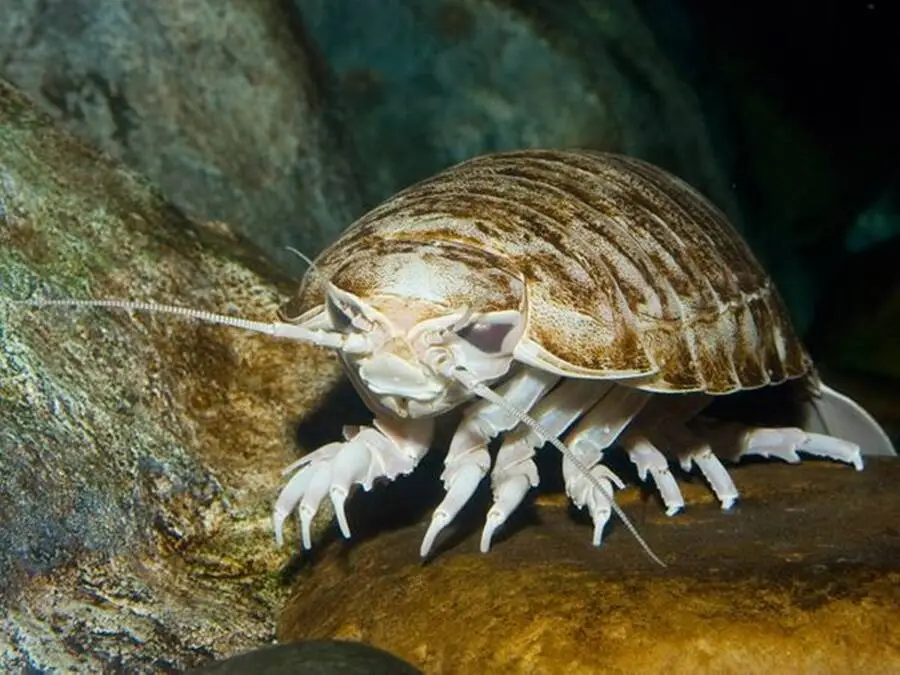About Isopod
- Isopods are an order of invertebrates (animals without backbones) that belong to the greater crustacean group of animals, which includes crabs and shrimp.
- Scientists estimate that there are around 10,000 species of isopods (all belonging to the order “Isopoda”).
- They also live in many different types of habitats, from mountains and deserts to the deep sea, and they are distributed worldwide.
- Features:
- They are one of the most morphologically diverse of all the crustacean groups, coming in many different shapes and sizes and ranging from micrometers to a half-meter in length.
- Isopods often do not look alike, but they do have common features. For example, all isopods have two pairs of antennae, compound eyes, and four sets of jaws.
- The body of all isopods consists of seven segments, each with its own pair of walking legs.
- Isopods have a short abdominal section composed of six segments, called “pleons,” and one or more of these segments is fused into a tail section.
- Each pleon has a set of biramous (branching in two) limbs called “pleopods” that are used for swimming and respiration.
- About half of the known species of isopods live in the ocean. Others live in coastal and shelf waters, moving around on the seafloor or living in plants.
- Most are free-living, but a number of marine species are parasitic on other animals.
Q1) What are crustaceans?
Crustaceans (make up a very large group of the Arthropods which include the crabs, lobsters, crayfish, shrimp, krill, barnacles, brine shrimp, copepods, ostracods and mantis shrimp. They are invertebrates with a hard exoskeleton (carapace), a segmented body that is bilaterally symmetrical, more than four pairs of jointed appendages. Crustaceans are found in a wide range of habitats – most are free-living freshwater or marine animals, but some are terrestrial (e.g. woodlice), some are parasitic (e.g. fish lice) and some do not move (e.g. barnacles)
Last updated on December, 2025
→ Check out the latest UPSC Syllabus 2026 here.
→ Join Vajiram & Ravi’s Interview Guidance Programme for expert help to crack your final UPSC stage.
→ UPSC Mains Result 2025 is now out.
→ UPSC Notification 2026 is scheduled to be released on January 14, 2026.
→ UPSC Calendar 2026 is released on 15th May, 2025.
→ The UPSC Vacancy 2025 were released 1129, out of which 979 were for UPSC CSE and remaining 150 are for UPSC IFoS.
→ UPSC Prelims 2026 will be conducted on 24th May, 2026 & UPSC Mains 2026 will be conducted on 21st August 2026.
→ The UPSC Selection Process is of 3 stages-Prelims, Mains and Interview.
→ UPSC Result 2024 is released with latest UPSC Marksheet 2024. Check Now!
→ UPSC Prelims Result 2025 is out now for the CSE held on 25 May 2025.
→ UPSC Toppers List 2024 is released now. Shakti Dubey is UPSC AIR 1 2024 Topper.
→ UPSC Prelims Question Paper 2025 and Unofficial Prelims Answer Key 2025 are available now.
→ UPSC Mains Question Paper 2025 is out for Essay, GS 1, 2, 3 & GS 4.
→ UPSC Mains Indian Language Question Paper 2025 is now out.
→ UPSC Mains Optional Question Paper 2025 is now out.
→ Also check Best IAS Coaching in Delhi

















